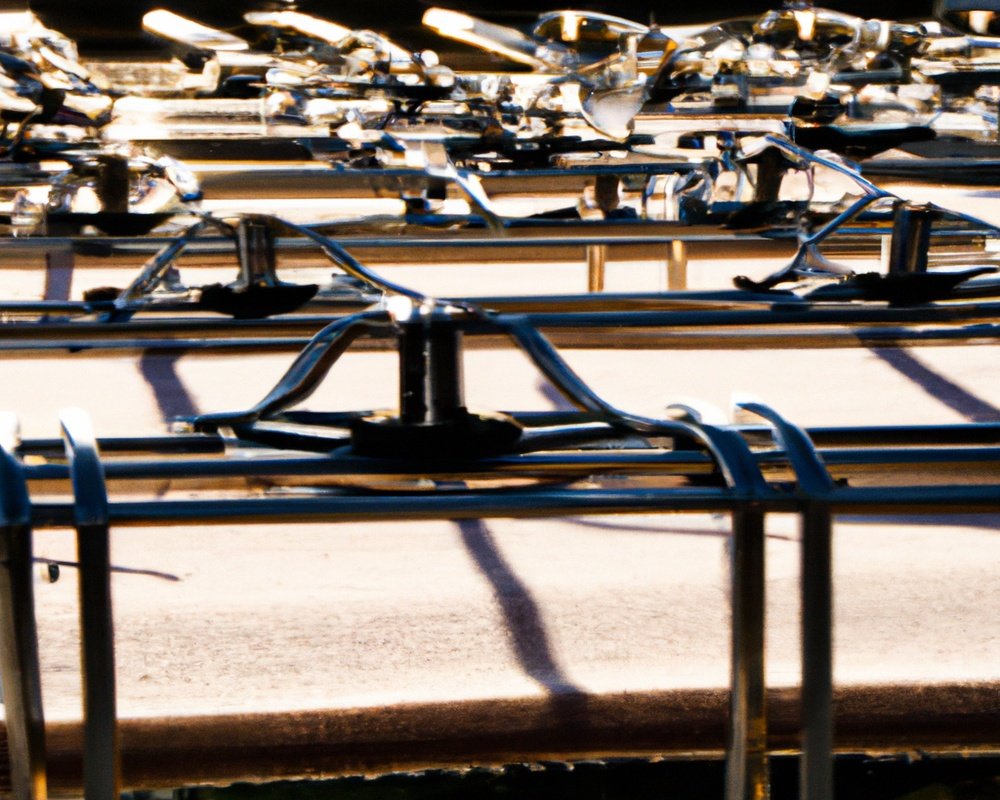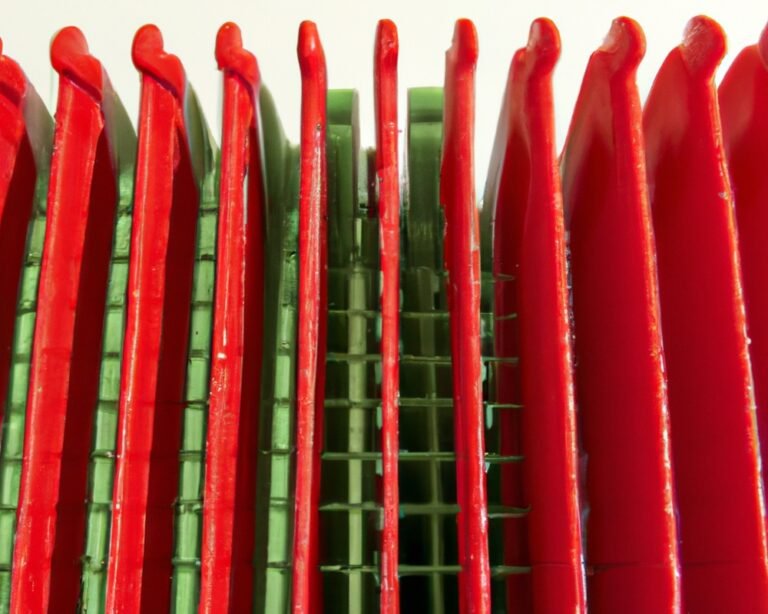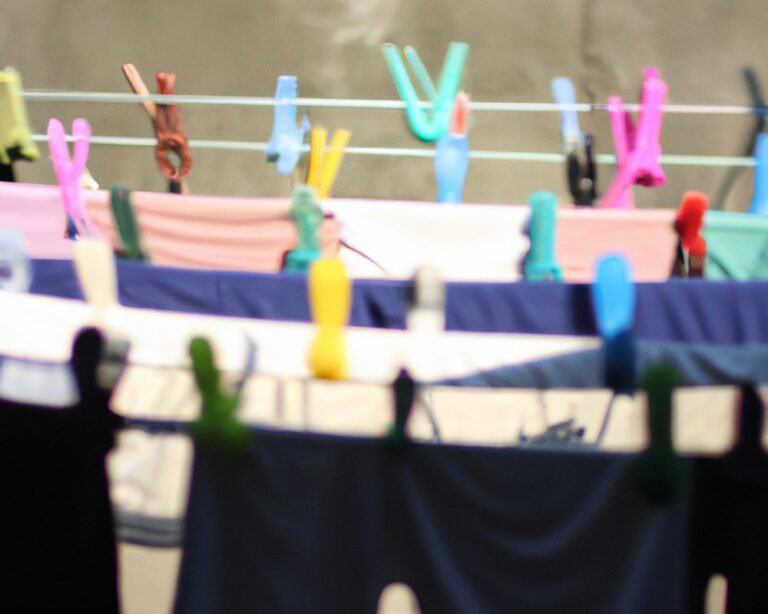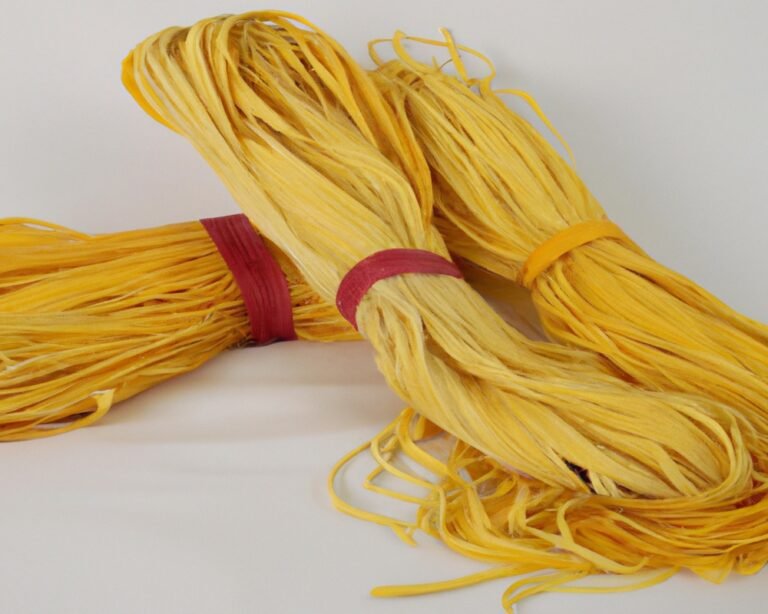Drying Racks for Effortless Laundry Drying
Key Takeaways:
- Drying racks provide a practical and energy-efficient solution for drying clothes.
- Using a drying rack instead of a dryer can help reduce energy consumption and lower utility costs.
- Drying racks promote better air circulation, resulting in quicker and more effective drying of garments.
- Drying racks are versatile and can be used for drying various types of clothing items, reducing the need for multiple appliances.
Are you tired of the constant battle with shrinking clothes and high energy bills from using your dryer? Look no further than the convenient and eco-friendly solution: drying racks! These unsung heroes of laundry day are here to save the day and make your life easier.
In this article, I will guide you through the world of drying racks, exploring their different types, benefits, and factors to consider when choosing one.
Whether you live in a small apartment, have a laundry room, or need something for outdoor use, drying racks are a versatile and cost-effective option. So, let’s dive in and discover how these simple yet effective tools can revolutionize the way you dry your clothes.
| Drying Rack | Type | Size | Capacity | Price |
|---|---|---|---|---|
| Brabantia Wall-Mounted | Wall-Mounted | 61 x 13 x 8 cm | 2.5 kg | $40 |
| Honey-Can-Do Foldable | Foldable | 76 x 61 x 15 cm | 20 kg | $30 |
| Whitmor Over-The-Door | Over-The-Door | 44 x 29.5 x 79 cm | 20 kg | $25 |
| Minky Multi-Dryer | Freestanding | 55 x 61 x 156 cm | 25 m | $50 |
| Leifheit Pegasus 150 | Freestanding | 66 x 61 x 152 cm | 15 m | $60 |
What are Drying Racks?
Drying racks are convenient tools used for air drying items such as clothes, dishes, and herbs, allowing them to dry naturally without the need for a dryer or excessive heat.
Definition and Purpose of Drying Racks
Drying racks are essential tools used for drying clothes, dishes, and other items.
They are designed with multiple horizontal bars or wires, providing ample space for items to air dry.
The purpose of drying racks is to allow air circulation, which promotes quick and efficient drying without the need for electricity or heat.
They are a cost-effective and eco-friendly alternative to using tumble dryers or dishwashers.
Drying racks come in various sizes and styles, including wall-mounted, foldable, and freestanding options, making them suitable for different living spaces and drying needs.

Types of Drying Racks
There are several types of drying racks available for various purposes.
Here are some common types:
- Clothes Drying Racks: Ideal for air drying clothes indoors, they come in various sizes and designs, including collapsible and wall-mounted options.
- Dish Drying Racks: These are designed specifically for drying dishes, utensils, and other kitchenware. They often have slots, hooks, and compartments to accommodate different items.
- Herb and Food Drying Racks: These racks are specially designed to dry herbs, fruits, vegetables, and other food items. They typically have mesh or hanging compartments to promote airflow.
- Outdoor Drying Racks: Designed to withstand outdoor weather conditions, these racks are specifically made for drying clothes or other items outside. They are sturdy and often come with additional features like adjustable height or rotating arms.
- Boot and Shoe Drying Racks: These racks are designed to dry wet shoes or boots by facilitating proper air circulation. They often have multiple tiers or adjustable sections to accommodate different shoe sizes.
Remember, the type of drying rack you choose depends on your particular needs and the items you want to dry.
Consider the size, material, and functionality of the rack to ensure it meets your requirements.
Benefits of Using Drying Racks
Using drying racks for your laundry has several benefits, including environmental impact, energy and cost savings, and gentle and effective drying for clothes.
Environmental Impact of Drying Racks
The environmental impact of drying racks is significantly lower compared to using a dryer. By air drying your clothes, you’re reducing energy consumption and greenhouse gas emissions.
Drying racks are eco-friendly since they don’t require electricity or natural gas to operate.
Additionally, clothes last longer when air-dried, reducing the need for frequent replacements and thus minimizing textile waste. Choosing drying racks over dryers is a simple and effective way to contribute to a greener planet.
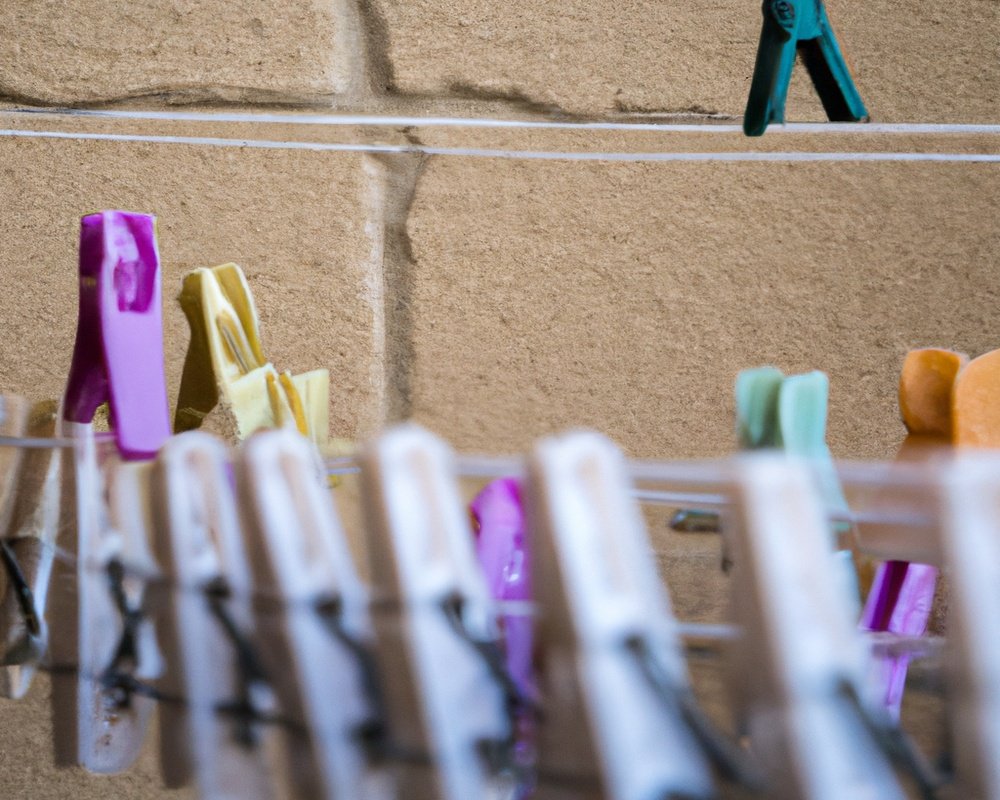
Energy and Cost Savings with Drying Racks
Using drying racks for your laundry can lead to significant energy and cost savings. Here’s why:
- Energy Efficiency: Drying racks don’t require electricity or gas to operate, reducing your overall energy usage. By air-drying your clothes, you minimize the use of energy-consuming appliances like dryers.
- Lower Utility Bills: Skipping the dryer can help lower your monthly utility bills. Dryers are one of the most energy-intensive appliances in our homes. By relying on drying racks, you can cut down on your energy consumption and save money.
- Extend Clothing Lifespan: Dryers can be harsh on fabrics, causing them to deteriorate over time. By air-drying your clothes on racks, you can help preserve the quality and lifespan of your garments. This means you won’t have to replace them as frequently, leading to cost savings in the long run.
- Reduced Maintenance Costs: Dryers require regular maintenance to keep them in good working condition, including cleaning lint traps and exhaust vents. By using drying racks, you minimize the need for such maintenance, saving you time, effort, and potential repair costs.
By incorporating drying racks into your laundry routine, you can effectively reduce your energy consumption, lower your utility bills, extend the lifespan of your clothes, and minimize maintenance costs. It’s a simple and cost-effective way to save both energy and money.

Gentle and Effective Drying for Clothes
Gentle and effective drying for clothes is essential to keep them in good condition and maintain their longevity. Using a drying rack allows clothes to dry gently by air-drying, reducing the risk of damage from high heat or tumbling in a dryer.
Drying racks also help to enhance drying efficiency by allowing air to circulate around the clothes, ensuring better and faster drying.
In addition, drying racks are versatile and can be used both indoors and outdoors, providing convenience and flexibility.
Factors to Consider When Choosing a Drying Rack
When choosing a drying rack, there are a few factors you should consider.
Size and Capacity
Size and capacity are important factors to consider when choosing a drying rack. The size of the rack should be suitable for your available space and the amount of laundry you typically have.
Consider the dimensions and make sure it fits in your laundry area.
Additionally, think about the capacity of the drying rack. How many clothes can it hold at once?
This is crucial in determining if it will meet your needs.
Make sure to choose a drying rack that has the right size and capacity for your laundry requirements.
Material and Construction
Material and construction are two crucial factors to consider when choosing a drying rack. The material of the drying rack determines its durability and resistance to rust or corrosion.
Stainless steel and plastic are popular choices for their durability and resistance to moisture.
The construction refers to how the drying rack is designed and assembled. Look for sturdy construction, with reinforced joints and stable legs.
This ensures that the drying rack can withstand the weight of wet clothes without tipping over.
Portability and Storage
Portability and storage are important factors to consider when choosing a drying rack.
A portable drying rack can be easily moved around, making it convenient for outdoor use or to be stored away when not in use.
Look for racks that are lightweight and have wheels for easy transportation.
As for storage, consider the size of the rack when folded or disassembled to ensure it fits well in your space.
Look for racks with collapsible or foldable features for compact storage.
Traditional Drying Racks
Traditional drying racks have been used for centuries to dry clothes and linens in an eco-friendly and efficient manner.
Clotheslines
Clotheslines are a cost-effective and environmentally-friendly way to dry your clothes. By hanging your laundry outdoors, you can take advantage of the natural sunlight and fresh air, resulting in clothes that smell great and are free from the wear and tear caused by machine drying.
Clotheslines are easy to set up and can be installed in various configurations, including rotary lines, retractable lines, and wall-mounted lines.
They are also adjustable, allowing you to hang clothes of different sizes. Essential accessories for clotheslines include clothespins and clothesline covers, which protect your laundry from rain or sun damage.
Give clotheslines a try to save energy and money while enjoying the benefits of naturally dried clothes!
Wooden Drying Racks
Wooden drying racks are a popular choice for air-drying clothes and other items.
They are sturdy and durable, making them ideal for hanging wet garments.
The natural wooden construction allows for good airflow, which helps in the drying process.
Wooden drying racks are lightweight and portable, making them easy to move around as needed.
They also add a touch of rustic charm to any laundry room or outdoor space.
Plus, they are environmentally friendly, as they do not require electricity to operate.
Tripod Drying Racks
Tripod Drying Racks Tripod drying racks are a practical and space-saving solution for drying clothes.
These racks feature three legs that provide stability and allow for easy setup and storage.
Here are a few key benefits of tripod drying racks:
- Versatility: Tripod drying racks come in various sizes and designs, making them suitable for different laundry loads. They can accommodate a good number of clothes without taking up much space.
- Stability: The three-legged design ensures stability, preventing the rack from toppling over even with heavy or bulky items. This makes them great for both indoor and outdoor use.
- Portability: Tripod drying racks are lightweight and foldable, making them easy to transport and store. You can effortlessly move them around your home or even take them on camping trips.
- Durability: Made from sturdy materials like stainless steel or aluminum, tripod drying racks are built to last. They can withstand regular use and exposure to various weather conditions.
- Cost-effective: Tripod drying racks are often more affordable than other drying solutions. They provide an economical way to air dry clothes, reducing energy consumption and extending the lifespan of your garments.
So, if you’re looking for a space-saving, versatile, and cost-effective drying solution, consider getting a tripod drying rack.
It’s a practical addition to any laundry routine.
Contemporary Drying Racks
Contemporary drying racks offer modern and stylish solutions for air-drying your clothes.
Foldable Clothes Drying Racks
Foldable clothes drying racks are a convenient and space-saving solution for drying your laundry.
These racks can be easily folded and stored when not in use, making them perfect for small living spaces or for those who don’t have a dedicated laundry room.
They typically have multiple tiers or rods for hanging clothes and are sturdy enough to hold a significant amount of weight.
Some foldable drying racks also come with additional features such as wheels for easy mobility or adjustable height settings.
With a foldable clothes drying rack, you can dry your clothes indoors without taking up too much space.
Wall-Mounted Drying Racks
Wall-mounted drying racks are a practical and space-saving solution for drying clothes. They are perfect for small homes or apartments where floor space is limited.
These racks can be easily installed on walls, allowing you to conveniently hang and air-dry your clothes.
Wall-mounted drying racks come in various sizes and designs, offering flexibility and versatility. They are durable and often made from materials such as stainless steel or aluminum, ensuring longevity.
Considering a wall-mounted drying rack can provide a convenient and efficient way to dry your clothes while optimizing your living space.
Over-the-Door Drying Racks
Over-the-Door Drying Racks are an efficient and space-saving solution for drying clothes. They are designed to hang over the back of a door, making use of unused vertical space.
These racks typically have multiple rods or hooks where you can hang your wet laundry.
They are ideal for small living spaces, apartments, or dorm rooms where floor space is limited. Additionally, over-the-door drying racks are easy to install and can be folded up and stored when not in use.
So, if you’re looking for a convenient and practical way to dry your clothes, consider investing in an over-the-door drying rack.
Drying Racks for Different Spaces
Whether you live in a small apartment, have a dedicated laundry room, or need a drying solution for outdoor use, there are drying racks available to suit every space.
Drying Racks for Small Apartments
Living in a small apartment means dealing with limited space, but that doesn’t mean you have to sacrifice on drying your clothes. Here are some drying rack options that are perfect for small apartments:
- Wall-mounted racks: These racks can be easily installed on your walls, saving precious floor space. They fold flat when not in use, allowing you to maximize the available area.
- Over-the-door racks: Utilize the space behind your doors with these racks. They simply hang over the top of your door, providing a convenient spot to air-dry your clothes.
- Foldable racks: Look for collapsible drying racks that can be easily folded and stored away when not needed. These compact racks are ideal for small apartments as they can be tucked into closets or under beds.
- Slim-line racks: Choose drying racks with a slim profile to fit into narrow spaces. These racks can be placed against walls or in tight corners, making the most of your limited floor area.
Remember, finding the right drying rack for your small apartment is all about maximizing space and convenience. So, explore these options and find the one that suits your needs best.
Drying Racks for Laundry Rooms
Drying racks for laundry rooms are a practical and space-saving solution for drying clothes indoors. They come in various sizes, styles, and materials to fit different laundry room layouts and needs.
Wall-mounted drying racks are perfect for maximizing vertical space, while foldable or retractable ones can be easily stored when not in use.
Look for racks with adjustable rods or shelves to accommodate different clothing items. Don’t forget to consider the weight capacity and durability of the rack, and choose one that suits your laundry room perfectly.
Drying Racks for Outdoor Use
Drying racks for outdoor use are a convenient way to dry your clothes when you don’t have space indoors. With their sturdy design and weather-resistant materials, they can withstand the elements.
Look for racks with a large drying capacity and adjustable height options, so you can maximize their drying potential.
Portable and foldable racks are excellent for easy storage. Consider racks with wheels for added mobility.
Tips for Efficiently Using Drying Racks
Efficiently use drying racks by sorting and hanging clothes properly. Maximize airflow and rotate clothes for even drying.
Sorting and Hanging Clothes
Sorting and hanging clothes is an essential part of doing laundry efficiently.
When sorting, separate your clothes by color and fabric type.
This will prevent colors from bleeding onto each other and certain fabrics from getting damaged.
Hanging your clothes properly helps prevent wrinkles and keeps them in good condition.
Use hangers that are appropriate for the clothing item.
Hang shirts and tops by the shoulders, pants by the waistband or cuffs, and delicate items by folding them over hangers with clips.
By organizing and hanging your clothes carefully, they’ll stay in better shape and be easier to find when you’re ready to wear them.
Maximizing Airflow
Maximizing airflow is key to efficiently drying your clothes on a drying rack. Place your rack in a well-ventilated area, away from walls or obstacles that could block airflow.
If you’re using an indoor drying rack, open windows or turn on fans to promote air circulation.
Space out your clothes so that they don’t touch each other, allowing air to flow between them. Don’t overload the rack, as this can restrict airflow.
By ensuring maximum airflow, your clothes will dry faster and more evenly.
Rotating Clothes for Even Drying
To ensure even drying, rotate your clothes on the drying rack regularly. This helps all sides of the garments receive adequate air circulation, preventing damp spots and speeding up the drying process.
A simple way to rotate clothes is by turning them inside out halfway through the drying process.
Additionally, consider rearranging the items on the rack every few hours, ensuring that every garment gets its fair share of airflow. This technique will help you achieve evenly dried clothes every time.
Maintaining and Cleaning Drying Racks
To keep your drying racks in good condition, regularly inspect for wear and tear, clean them to remove lint, and store them properly.
Regular Inspections for Wear and Tear
Regular inspections for wear and tear are essential for maintaining the functionality and safety of your drying rack.
Here are some key points to consider:
- Check the frame: Inspect the frame for any signs of rust, cracks, or bending. These issues can compromise the stability of the rack and potentially lead to accidents.
- Examine the joints: Pay close attention to the joints and connectors. Look for any loose or damaged parts that may need to be tightened or replaced. Ensure that the rack remains sturdy and secure.
- Assess the hooks and clips: Inspect the hooks or clips that hold your laundry in place. Make sure they are intact and functioning properly. Replace any broken or damaged hooks to prevent clothes from falling off.
- Inspect the drying lines: Check the lines for fraying, stretching, or signs of wear. Replace any damaged lines promptly to avoid the risk of clothes falling or getting damaged while drying.
- Keep an eye on the wheels: If your drying rack has wheels, inspect them regularly. Ensure they are clean, free-moving, and not damaged. Lubricate them if necessary to maintain smooth operation.
Taking the time for these regular inspections for wear and tear will help prolong the lifespan of your drying rack and ensure it remains safe and efficient for your daily use.
Cleaning and Removing Lint
Lint can accumulate on drying racks over time. To clean and remove lint effectively, start by inspecting the racks for any loose strands or fibers.
Use a lint roller or a damp cloth to gently wipe away lint from the surfaces.
For hard-to-reach areas, use a soft brush or a toothbrush. Make sure to clean regularly to prevent lint buildup and improve the efficiency of your drying rack.
Storing Drying Racks Properly
To store drying racks properly, there are a few key things to keep in mind.
- Make sure the drying racks are clean and dry before storing them. This will prevent any mold or mildew from developing.
- Choose a designated storage area that is clean, dry, and away from direct sunlight. This will help prolong the lifespan of your drying racks.
- If possible, disassemble the drying racks and store them in a compact manner. This not only saves space but also prevents any parts from getting lost or damaged.
- Consider using storage solutions such as bins, shelves, or hooks to keep your drying racks organized. This will make it easier to find and access them when needed.
- Lastly, avoid placing heavy objects on top of the drying racks during storage. This can lead to bending or warping of the racks, affecting their functionality.
Frequently Asked Questions about Drying Racks
Can Drying Racks Damage Clothes?
Can Drying Racks Damage Clothes?
Yes, using drying racks can potentially damage clothes if not used correctly.
Here are a few reasons why:
- Stretching: Clothes hung on drying racks can stretch due to the weight and gravity pulling them downwards. This is especially true for heavier garments like sweaters or jeans.
- Misshaping: If clothes are not properly supported on the drying rack, they can lose their shape. Delicate items like bras or bathing suits may lose their elasticity or become misshapen if hung incorrectly.
- Color fading: Direct sunlight or prolonged exposure to heat can cause colors to fade. It’s important to air-dry clothes in a shaded area or indoors to preserve their vibrancy.
To prevent damage, make sure to:
- Use a sturdy drying rack with ample space for each garment
- Lay heavier items flat instead of hanging them to avoid stretching
- Dry dark or vibrant-colored clothes in a shaded area to prevent fading
How Can I Reduce Wrinkles on Clothes when Using a Drying Rack?
To reduce wrinkles on clothes when using a drying rack, here are a few tips:
- Shake out the clothes before hanging them to remove excess moisture and loosen any wrinkles.
- Smooth out the fabric with your hands before hanging it on the drying rack. This helps to prevent wrinkles from setting in.
- Avoid overcrowding the drying rack. Leave enough space between garments to allow for proper airflow. This helps to minimize wrinkling.
- Opt for gentle or low-heat drying settings if your drying rack has them. High heat can lead to more wrinkles.
- Remove the clothes from the drying rack as soon as they are dry. Leaving them on the rack for too long can lead to creases and wrinkles.
Remember, these tips can help reduce wrinkles, but some fabrics may still require ironing or steaming to achieve a completely wrinkle-free look.
Are Drying Racks Suitable for Every Type of Fabric?
Drying racks are generally suitable for every type of fabric. They provide a gentle and even drying process that helps to prevent damage and maintain the fabric’s shape.
However, there are a few exceptions.
Delicate fabrics such as silk and lace may require more care and should be air-dried flat instead. Additionally, heavily soiled or wet fabrics may benefit from the use of a dryer before being hung on a drying rack.
It’s always best to check the care label on your clothing for specific instructions.
Final Verdict
Drying racks offer numerous benefits in terms of environmental impact, energy and cost savings, as well as gentle and effective drying for clothes.
When choosing a drying rack, consider factors such as size and capacity, material and construction, and portability and storage.
Traditional and contemporary drying rack options are available, catering to various spaces and needs.
To efficiently use drying racks, sort and hang clothes properly, maximize airflow, and rotate clothes for even drying.
Regular maintenance and cleaning will prolong the lifespan of the drying rack.
Overall, drying racks are a practical and eco-friendly solution for drying clothes.

